
Different Types of Chefs
Last updated on 5/31/2024In the culinary world, chefs play a crucial role in creating delicious and visually appealing dishes for restaurants, hotels, catering services, and other food establishments. From executive chefs overseeing the entire kitchen to pastry chefs creating delectable desserts, there are a diverse variety of chefs working together to deliver exceptional dining experiences to customers. Read on to learn the difference between the various chef titles and the tasks those chefs perform in a bustling restaurant kitchen.
What Is a Chef?
Chefs are culinary professionals responsible for creating and executing menus in commercial kitchens. They possess a wide range of skills, including food preparation, cooking techniques, menu planning, and kitchen management. Chefs may specialize in various culinary styles, such as pastry, grill, and fry. These professionals play a crucial role in the foodservice industry by ensuring high-quality and innovative dishes are consistently delivered to customers.
Chef Hierarchy
The different chef titles emerged in the 19th century with the creation of the French Brigade System. Chef Georges Auguste Escoffier created this system to provide restaurants with a kitchen hierarchy in order to operate more efficiently. Most kitchens no longer strictly operate under the French Brigade System, seeing it as out of date since it portrays certain stations as more important than others. Despite this, a chef hierarchy can help provide a basic outline that restaurant owners can refer to when setting up their kitchen and hiring chefs for their staff.
Different Types of Chefs
Becoming a chef requires years of education and experience, climbing from entry-level positions to the ultimate goal of executive chef. In managerial chef positions, there is an established hierarchy because these chefs have the most responsibility in the kitchen to ensure the restaurant's overall success. When it comes to specialized chefs, that hierarchy is replaced with various stations. Prep cooks complete the staff to create an efficient and hard-working team. Hiring the right people for the jobs can help you create an unbeatable restaurant culture in your business.
1. Chef-Owner (Group Chef)
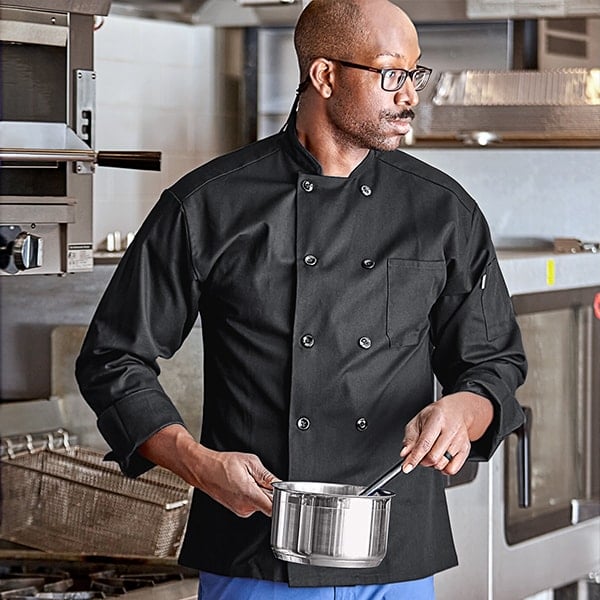
A chef-owner is a chef who starts their own restaurant. Also known as a group chef, their role combines culinary expertise with business acumen. As the owner of a restaurant or culinary business, the chef-owner is responsible for overseeing all aspects of the operation, including menu development, staff hiring, and financial planning. This role requires a diverse skill set, blending creativity in the kitchen with leadership and strategic thinking to ensure the success of the business. Chef-owners often work long hours to maintain the quality and reputation of their establishment, making them integral figures in the culinary industry.
- Primary Task: Business management
- Number Per Kitchen: One per kitchen
- Other Duties: Running the establishment and engineering a menu
2. Executive Chef (Chef de Cuisine, Head Chef)
An executive chef oversees all aspects of the kitchen. Executive chefs, also known as chef de cuisine or head chefs, are one of the top-ranking chefs in a commercial kitchen. They are responsible for overseeing all kitchen operations, helping with menu planning, recipe development, and staff management. Executive chefs typically have extensive culinary experience and training, often holding a degree in culinary arts. Their leadership skills are crucial in maintaining high standards of food quality, consistency, and creativity in a restaurant or food service establishment.
- Primary Task: Kitchen management
- Number Per Kitchen: One per kitchen
- Other Duties: Oversee daily operations, kitchen costs, food preparation, menu planning, and create most of the recipes and dishes for the menu
3. Sous Chef (Second Chef, Under Chef)
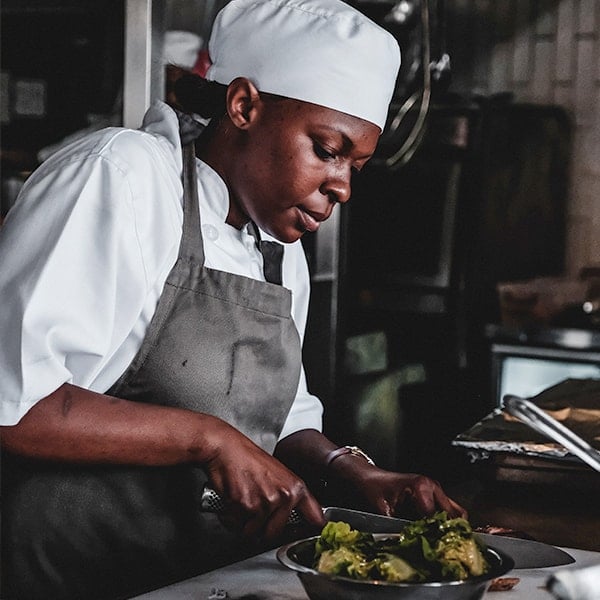
A sous chef is the second in command and will run the kitchen in the executive chef’s absence. Also known as second chefs or under chefs, they play a crucial role in commercial kitchens by assisting the head chef in managing kitchen operations. They supervise kitchen staff, coordinate food preparation, and ensure dishes are prepared to the highest standards. Sous chefs are responsible for maintaining kitchen efficiency, quality control, and food safety practices. With their culinary expertise and leadership skills, sous chefs are essential in maintaining a smooth and organized kitchen environment.
- Primary Task: Team management
- Number Per Kitchen: Can be more than one in a kitchen depending on the size of the establishment
- Other Duties: Train newly hired chefs and cooks and oversee each dish's details
4. Senior Chef (Chef de Partie, Station Chef)
A senior chef (chef de partie or station chef) holds a crucial role in the kitchen hierarchy. They are responsible for overseeing a specific station or section of the kitchen, such as sauces, meats, or pastries. Senior chefs have a wealth of culinary knowledge and experience, allowing them to lead and mentor junior staff members. Their duties include preparing dishes, ensuring quality and consistency, and coordinating with other kitchen staff to keep operations running smoothly. Senior chefs work hard to maintain the high standards of a commercial kitchen.
- Primary Task: Station management
- Number Per Kitchen: Can have more than one
- Other Duties: Specialists on a certain portion of the menu and will ensure that high-quality food leaves their station
5. Pantry Chef (Garde Manger)
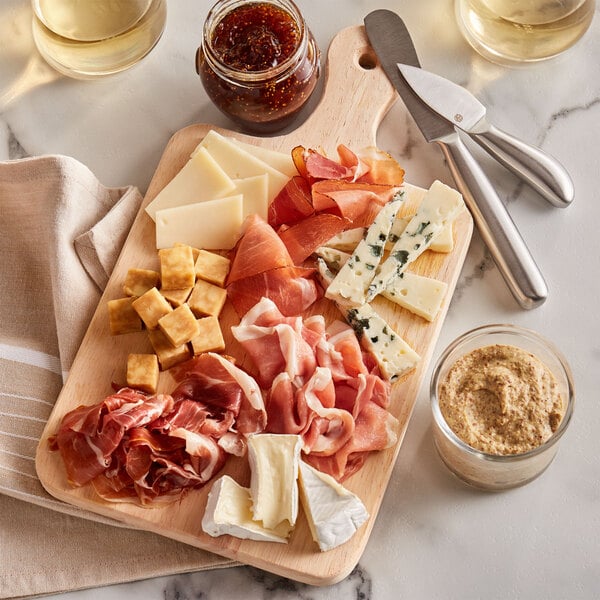
The pantry chef, commonly known as garde manger or garmo, is responsible for the preparation of cold dishes, salads, charcuterie, and appetizers in a commercial kitchen. They specialize in creating visually appealing and delicious cold platters, often incorporating intricate garnishes and decorations. Pantry chefs play a crucial role in maintaining the quality of cold food items, ensuring that they meet the standards of the establishment. Their skill in handling and preserving perishable ingredients is essential for delivering fresh and flavorful dishes to customers.
- Primary Task: Preparing cold food items like salads, cold cuts, hors d’oeuvres, and dressings
- Number Per Kitchen: 1-2 depending on restaurant size
- Other Duties: Responsible for setting up buffet lines and adding centerpieces for an upscale presentation that may include carved and molded ice or fruits
Back to Top
6. Grill Chef (Grillardin)
Grill chefs, also known as grillardins, are culinary professionals specializing in grilling techniques to create delicious dishes. They are skilled in managing grills, ensuring the right temperature and cooking times for each type of meat, seafood, or vegetable. Grill chefs often work in steakhouses, barbecue restaurants, or upscale dining establishments, where they bring out the unique flavors of grilled foods through their expertise.
- Primary Task: Grill meat, seafood, and vegetables
- Number Per Kitchen: Usually one grill cook
- Other Duties: Consult with butcher and vegetable chefs if need be
7. Sauce Chef (Saucier, Saute Chef)
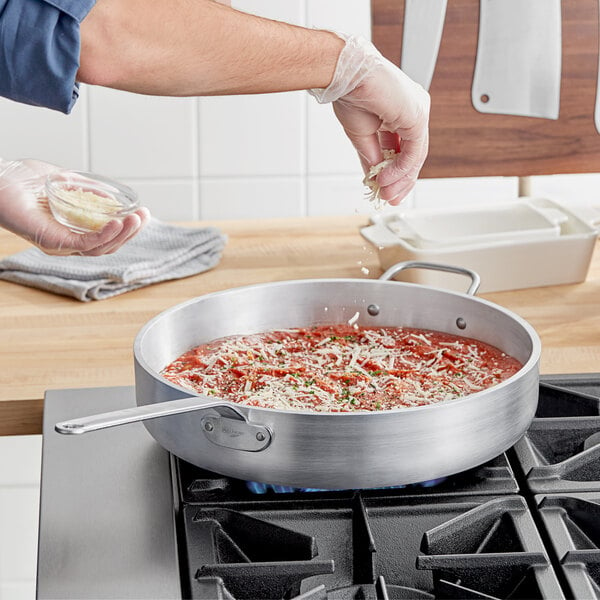
Sauce chefs, also known as sauciers or saute chefs, are culinary professionals specializing in creating and executing sauces and accompanying dishes. These chefs are responsible for preparing a wide range of sauces, from classic French reductions to modern fusion creations, to enhance the flavors of a dish. Their expertise lies in balancing flavors, textures, and consistencies to elevate the overall dining experience. They are also masters in using a saute pan to cook dishes quickly over high heat, often incorporating ingredients like vegetables and meats. Their role is crucial in restaurants where speed and precision are essential to delivering high-quality meals to customers.
- Primary Task: Prepare sauces and gravies for all meal types
- Number Per Kitchen: Normally one per kitchen
- Other Duties: Saute meat and vegetables, may also prepare soups and stews
8. Fry Chef (Friturier)
Fry chefs or frituriers specialize in the art of frying food to crispy perfection. They are experts in managing fryers and ensuring that items such as french fries, onion rings, and fried chicken are fried to the right temperature and texture. Fry chefs play a crucial role in commercial kitchens, where their skills are essential for creating popular fried dishes that keep customers coming back for more.
- Primary Task: Ensures foods are perfectly breaded and fried
- Number Per Kitchen: One if the menu is diverse, many more if the menu focuses on fried foods
- Other Duties: Clean out fryers and consult with butcher and vegetable chefs if need be
9. Pastry Chef (Patissier)

Pastry chefs or patissiers specialize in creating a wide range of delectable desserts, baked goods, and pastries. These culinary professionals possess a keen understanding of the science behind baking and are skilled in crafting intricate and visually appealing sweet treats. They may have expertise in English or French pastries depending on their education. Pastry chefs often work in bakeries, cafes, restaurants, or hotels, using their talent to create mouthwatering desserts that delight customers and elevate dining experiences.
- Primary Task: Prepare pastries, breads, and desserts
- Number Per Kitchen: Can have just one for a small dessert menu, but there is normally an entire pastry team
- Other Duties: May be in charge of creating the whole dessert menu
10. Prep Cook (Kitchen Porter, Kitchen Hand, Kitchen Assistant)
Prep cooks, also known as kitchen porters, kitchen hands, or kitchen assistants, play a crucial role in commercial kitchens by preparing ingredients, chopping vegetables, and assisting with food preparation tasks. They are responsible for ensuring that the kitchen is well-stocked, organized, and ready for service. Prep cooks work under the supervision of chefs and help maintain a smooth workflow in the kitchen. Their attention to detail and efficiency are essential in ensuring that dishes are prepared in a timely manner and meet the quality standards of the establishment.
- Primary Task: Daily food prep and kitchen tasks
- Number Per Kitchen: At least one per kitchen, but usually a whole team
- Other Duties: Perform other cooking duties as needed
Chef vs Cook
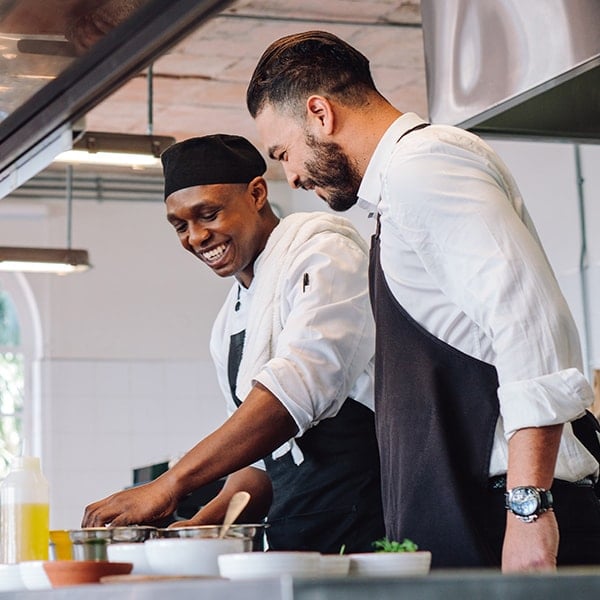
The main difference between a chef and a cook lies in their level of culinary expertise, training, and responsibilities within a commercial kitchen. Chefs are skilled professionals with a deep understanding of culinary techniques and creativity, while cooks excel in executing recipes and working efficiently in a kitchen environment.
A chef will typically undergo formal training and acquire a certain level of expertise in the culinary arts. Chefs often hold a degree from a culinary school and have spent years honing their skills in various aspects of cooking, such as knife skills, flavor profiles, and plating techniques. They are known for their creativity, innovation, and ability to lead a kitchen team.
On the other hand, a cook is someone who prepares food in a kitchen setting. Cooks may not have the same level of formal training as chefs, but they are skilled in preparing recipes and dishes according to established guidelines. Cooks play a crucial role in the day-to-day operations of a kitchen, working under the guidance of a chef to ensure that dishes are prepared and served efficiently.
Both roles are essential for the smooth operation of a commercial kitchen, each contributing their unique skills and expertise to create memorable dining experiences for customers.
If you're interested in pursuing a career in the food service or hospitality industries, apply to WebstaurantStore's scholarship so we can help you meet your goals.
Back to TopWorking in a commercial kitchen can be fast-paced in terms of daily tasks and upward mobility. Various chef and cook positions are needed to keep a restaurant running smoothly and the hierarchy can look very different from kitchen to kitchen. There are even more restaurant positions and jobs than listed above for the whole establishment to succeed. It is important to keep in mind that becoming a chef requires years of training. Work your way from the bottom up through the different jobs available, find an area you can specialize in, and pursue it with gusto.






